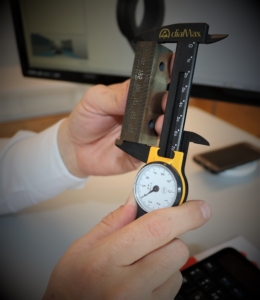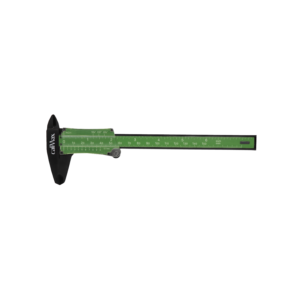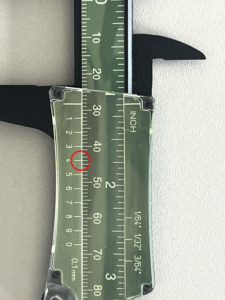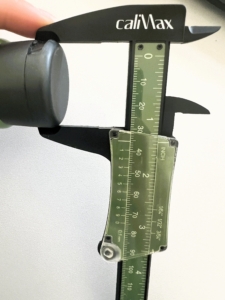Reading calipers: Tips and tricks for precise measurements
Reading calipers is an important skill that every mechanic, engineer or craftsman should master. Calipers are an extremely precise measuring tool that is widely used in industry and trade. They consist of a fixed and a movable part and have a scale that can be used to measure lengths and distances.
A calliper gauge usually consists of a main body and a movable slide. The main body has a scale on which the measurements are given in millimetres and inches. The scale on the slide is usually somewhat smaller and is known as the vernier scale. The vernier scale consists of a series of markings located between the main markings of the scale on the main body. The vernier scale allows measurements to be taken with greater accuracy.
Reading calipers requires a certain amount of experience and practice. However, there are a few steps that should be followed in order to take accurate and precise measurements.
The first step is to align the caliper. Make sure that the caliper is parallel to the surface and that the scales on the main body and the caliper are fully aligned. If the caliper is not aligned correctly, this can lead to inaccurate measurements.
Clock calipers and digital calipers.
The two versions of the dial caliper and digital caliper are the easiest to read. With the DialMax, you can see the measurement on the pointer on the dial. The DigiMax shows you the measurement digitally up to the second decimal point.
The vernier caliper is a little more difficult.
The vernier display
Start with the main scale on the main body. Read the value on the scale directly below the slider. The value is given in millimetres or inches, depending on which unit of measurement is used on the scale. Once you have read the value on the main scale, move on to the vernier scale on the slider.
The vernier scale is slightly more complicated than the main scale. The vernier scale consists of a series of numbers arranged between the main scale markings on the main body. The markings on the vernier scale are smaller than the markings on the main scale. To obtain the exact measurement, you must compare the markings on the vernier scale with the main scale.
To read the value on the vernier scale, look for the mark on the vernier scale that is closest to the main scale. The digit on the vernier scale whose mark coincides exactly with a mark on the main scale determines the tenth of a millimetre.
Example:
We measure the lid of a cream: we see that the diameter is 31 mm. If we now look at the vernier scale, we look for the number that matches exactly. In this case it is 4.
So the diameter is exactly 31.4 mm.
It is important to always align the caliper correctly and to read the exact values on the main scale and the vernier scale in order to carry out accurate and precise measurements.
Feel free to send us your questions and comments!







